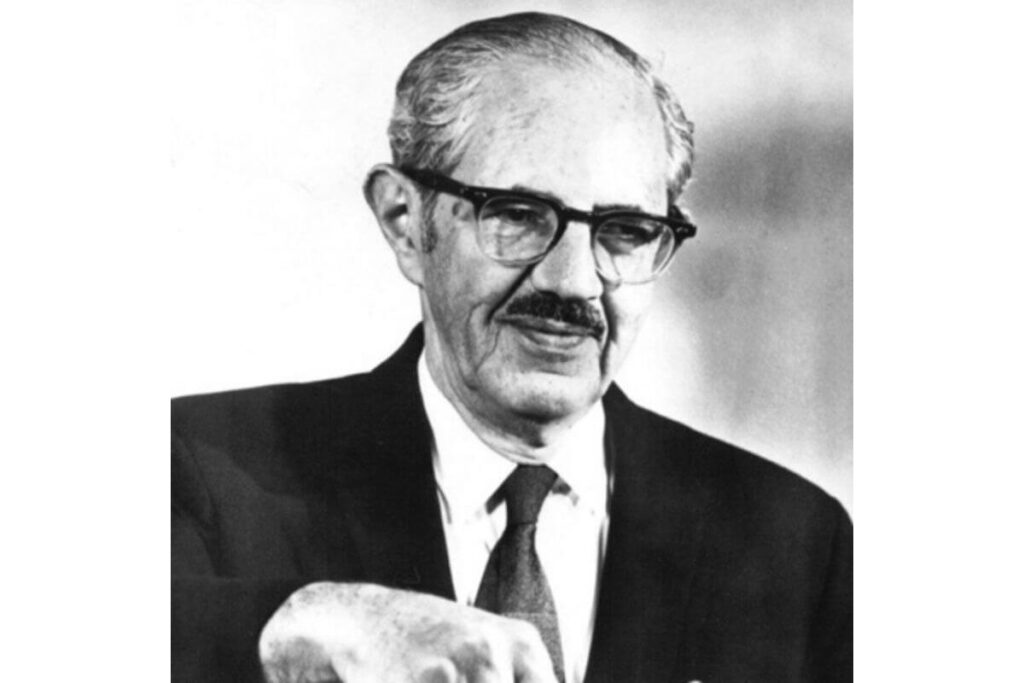Isaac Kashdan was an American chess grandmaster and chess writer, born in New York City on November 19, 1905, and passed away in Los Angeles on February 20, 1985.
He was twice U.S. Open champion (1938, 1947) and played five times for the United States in chess Olympiads, winning a total of nine medals.
Kashdan was often called “der Kleine Capablanca” (German for “The little Capablanca”) in Europe due to his ability to extract victories from seemingly even positions.
He was considered one of the world’s best chess players in his time and was inducted into the U.S. Chess Hall of Fame in 1986.
Career Highlights
Some highlights of Kashdan’s career include:
- Winning the U.S. Open in 1938 and 1947
- Playing five times for the U.S. team in the Chess Olympiads, with his best results in 1930 and 1931
- Winning international tournaments in Berlin, Stockholm, and Gyor in 1930, tying for first at Mexico City in 1932, and finishing second at Frankfurt 1930, New York 1931, Hastings 1931-32, Pasadena 1932, and Syracuse 1934
- Tying for first with Samuel Reshevsky in the 1942 U.S. Championship, but ultimately losing their playoff match.
- Being awarded the Grandmaster title in 1954.
Life and Legacy
Despite his chess prowess, Kashdan could not engage seriously in a chess career for financial reasons, as his peak chess years coincided with the Great Depression. He resorted to earning a living as an insurance agent and administrator to support his family.
Kashdan was also an accomplished chess writer and editor. He edited two books: “First Piatigorsky Cup” (1965) and “Second Piatigorsky Cup” (1968).
In 1950, he was awarded the International Master (IM) title, followed by the Grand Master (GM) title in 1954 and the International Arbiter (IA) title in 1960.
Retrospectively applying modern rating systems, Kashdan was considered one of the top five players in the world during the early 1930s, including a No. 2 ranking between 1932 and 1934.
His nine medals in five Olympiads are an all-time best among American players.
Kashdan’s contributions to chess were recognized by his induction into the U.S. Chess Hall of Fame in 1986.
Playing Style
Isaac Kashdan was known for his powerful tactical play and exceptional endgame skills. According to Denker and Parr, he was a formidable tactician, but his true strength lay in the endgame, where he excelled.
His ability to extract victories from seemingly even positions earned him the nickname “der Kleine Capablanca” (German for “The little Capablanca”) in Europe.
Kashdan’s playing style and skills were highly regarded, and he was considered one of the most likely players to succeed Alexander Alekhine as World Champion.
Kashdan’s proficiency in the endgame and his tactical prowess were key elements of his playing style, contributing to his success in various chess tournaments and Olympiads.
His exceptional performance in the Chess Olympiads, where he played five times for the U.S. team, further showcased his strategic and tactical abilities.
In addition to his playing career, Kashdan made significant contributions to chess as a writer and editor. He was awarded the Grandmaster title in 1954 and the International Arbiter title in 1960, further solidifying his impact on the chess world.
Kashdan’s legacy as a chess player, writer, and editor continues to be celebrated, and his contributions to the game were recognized with his induction into the U.S. Chess Hall of Fame in 1986


